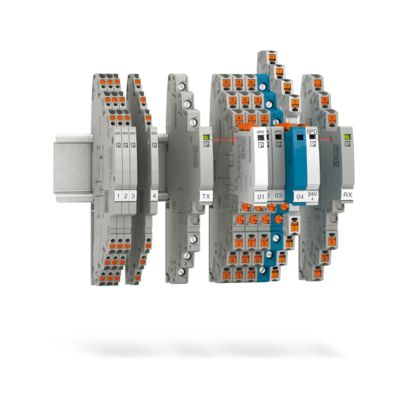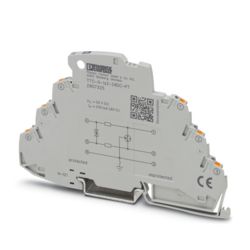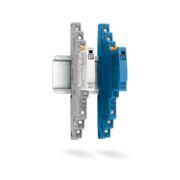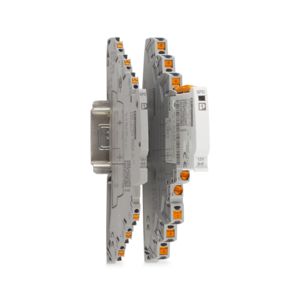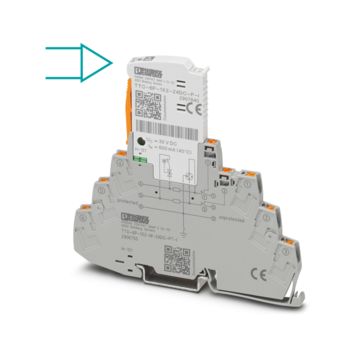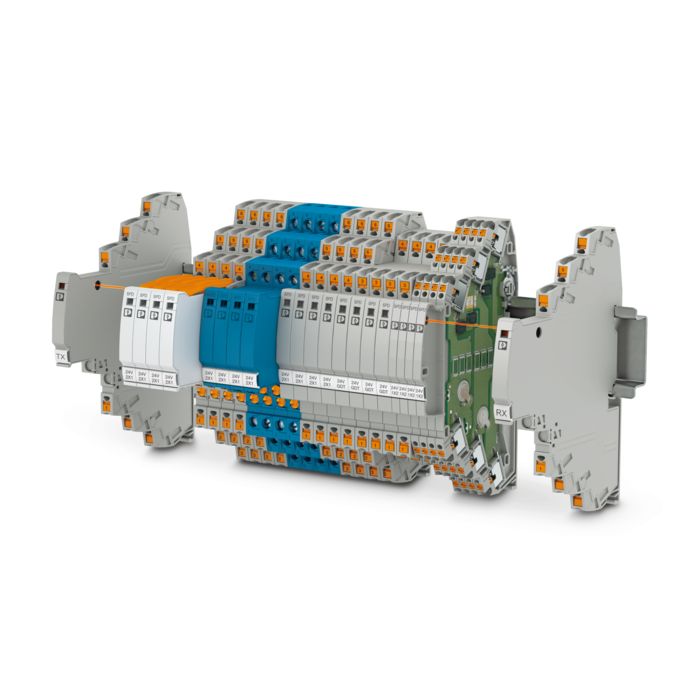
TERMITRAB complete is the world’s narrowest surge protection solution for MCR technology. This product family provides you with a complete system. It ranges from simple, single-stage surge protection to multi-stage, pluggable versions with knife disconnection, signaling, and remote signaling option.
The narrowest surge protective devices are just 3.5 mm wide. This represents space savings of up to 50% compared to installations with a 7 mm overall width.
The protective devices in the TERMITRAB complete family provide mechanical signaling that indicates the status of the protective devices without the need for additional auxiliary power. Optional remote signaling modules visually monitor up to 40 protective devices. In the event of a thermal overload, the remote signaling modules notify the control room, for example, of the status in the form of a group message via a floating contact.

